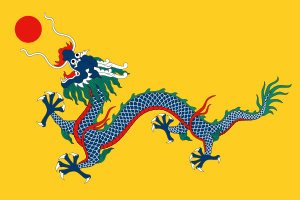Self-Strengthening Movement facts for kids

The Self-Strengthening Movement (Chinese: 洋務運動 or 自強運動; 1861 - 1895) was a reform organised during the late Qing Dynasty. The movement's intent was the modernization of China as a result of many military defeats it had faced at the hands of the West. It could be divided into three phases the first phase (1861 - 1872), the second phase (1872 - 1885) and the third phase (1885 - 1895).
After the defeat of Opium Wars and the outbreak of Taiping Rebellion, the emperor and imperial officials realised that the Qing Government might be overthrown soon and they would no longer reign the country. In order to prevent this, a series of reforms were implemented in the Self-Strengthening Movement, sometimes called "Westernization" which sought to adopt ideas from the West, mainly in technology.
Major leaders
- Yixin, Prince Gong (Chinese: 恭親王)
- Wenxiang (Chinese: 文祥)
- Zeng Guofan (Chinese: 曾國藩)
- Li Hongzhang (Chinese: 李鴻章)
- Zuo Zongtang (Chinese: 左宗棠)
- Shen Baozhen (Chinese: 沈葆禎)
- Zhang Zhidong (Chinese: 張之洞)
Images for kids
-
Nanjing Jinling Arsenal (金陵造局), built by Li Hongzhang in 1872.
-
Chinese warship Yangwu, built at the Fuzhou Arsenal in 1872.
-
Gun transportation at Shanghai Jiangnan Arsenal (上海江南製造兵工廠).
See also
 In Spanish: Movimiento de autofortalecimiento para niños
In Spanish: Movimiento de autofortalecimiento para niños
















